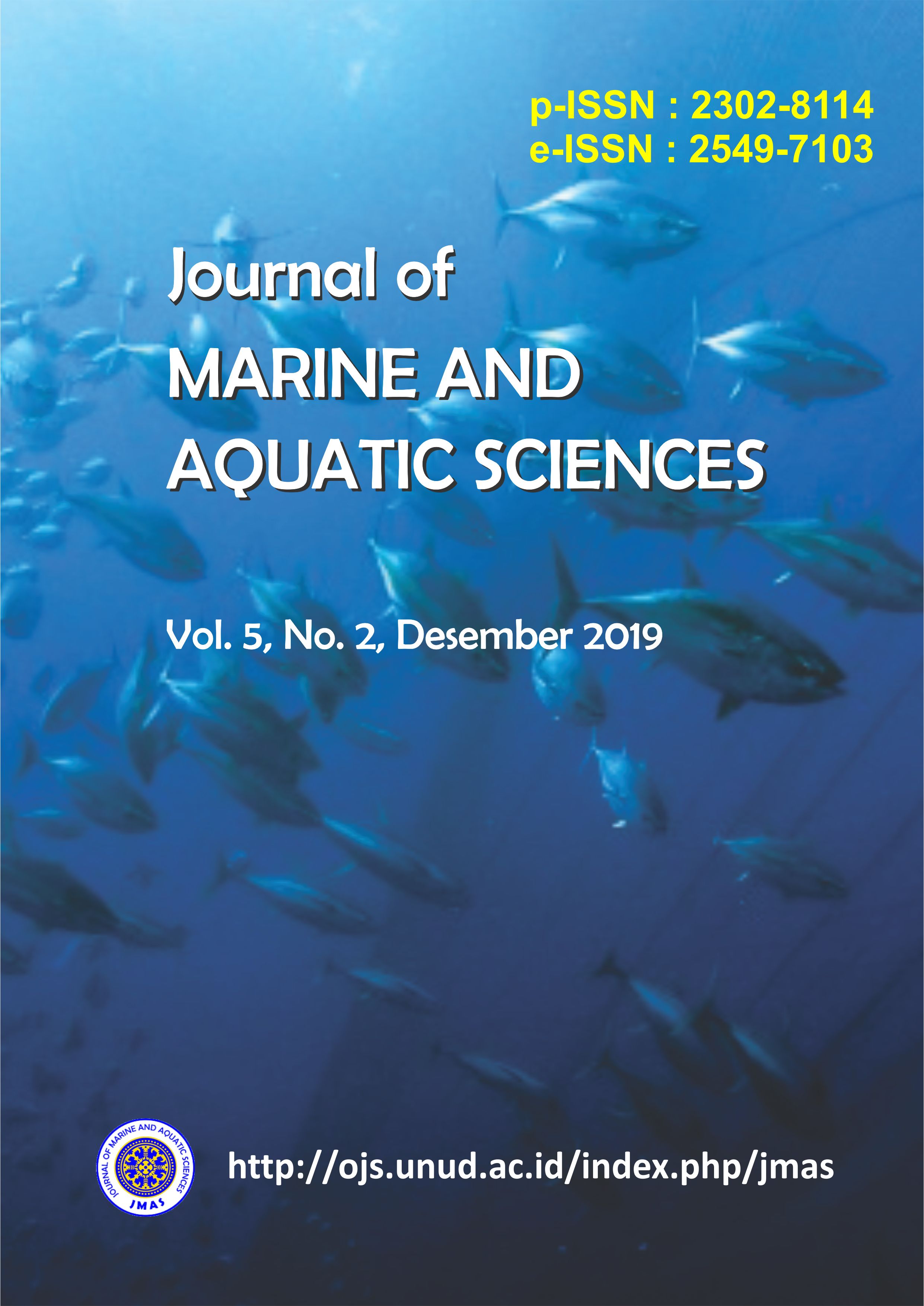Biomarker Histopatologi Hati Ikan Belanak (Mugil cephalus) Sebagai Peringatan Dini Toksisitas Kromium(Cr) di Muara Tukad Badung, Bali
Abstract
The impact from the increased discharge of domestic and industrial waste, as well as other human activities, has had a significant negative impact on the quality of water in the TukadBadung River Estuary, which is a natural habitat for mullets (Mugil cephalus). In seeking to understand the response of aquatic organisms to this environmental change, one important biomarker of environmental stress is the histopathological features of fish liver. The measurement of water quality parameters in TukadBadung Estuary showed a normal range of dissolved oxygen (8.07), pH (7.01) and temperature (28.50C). However, the measurement results for the heavy metals chromium (Cr) in Station I (0.086 mg/L), Station II (0.099 mg/L), and Station III (0.099 mg/L) all exceeded the water quality standard threshold, based on the KepMen Negara LH No. 51 Tahun 2004 standard for seawater quality (seawater biota). The results of the observation of histopathological features of the liver organ of mullets (Mugil cephalus) in the TukadBadung Estuary revealed various physical damage, including signs of haemorrhagic, congestion, vascular degeneration, and focal necrosis.
Downloads

This work is licensed under a Creative Commons Attribution 3.0 International License.
Copyright 2012 - 2023 Journal of Marine and Aquatic Sciences (JMAS)
Published by Fakultas Kelautan dan Perikanan Universitas Udayana, Denpasar, Bali, Indonesia
JMAS (p-ISSN 2302-8114; e-ISSN 2549-7103)


